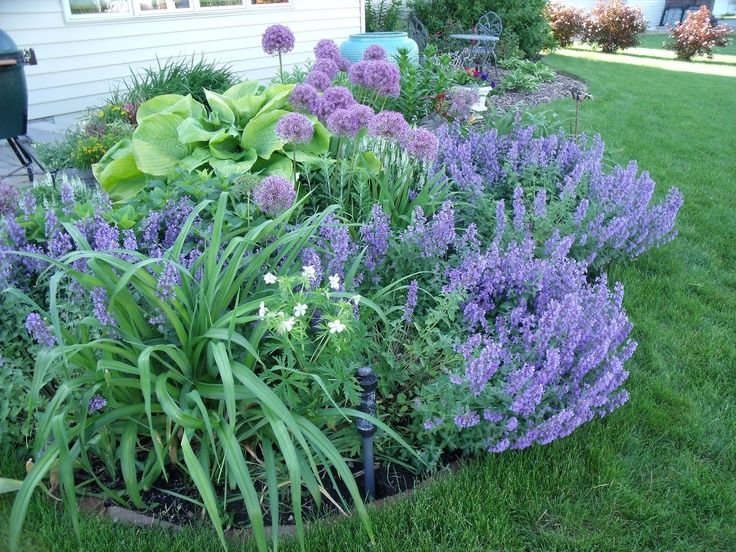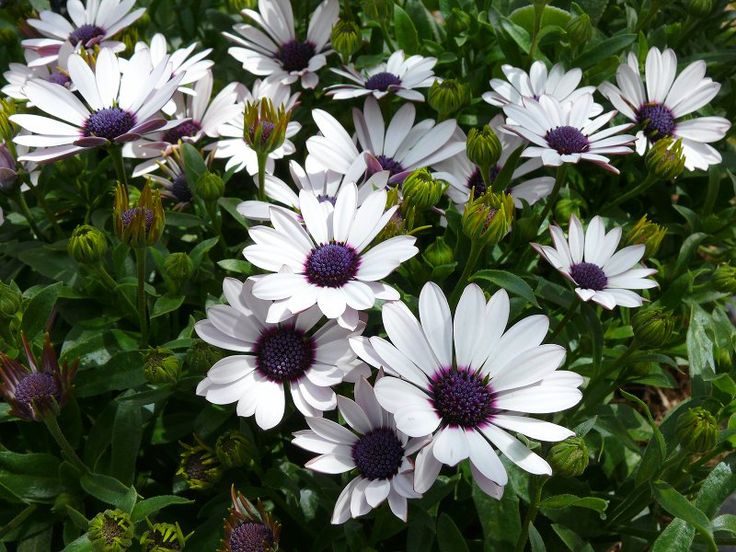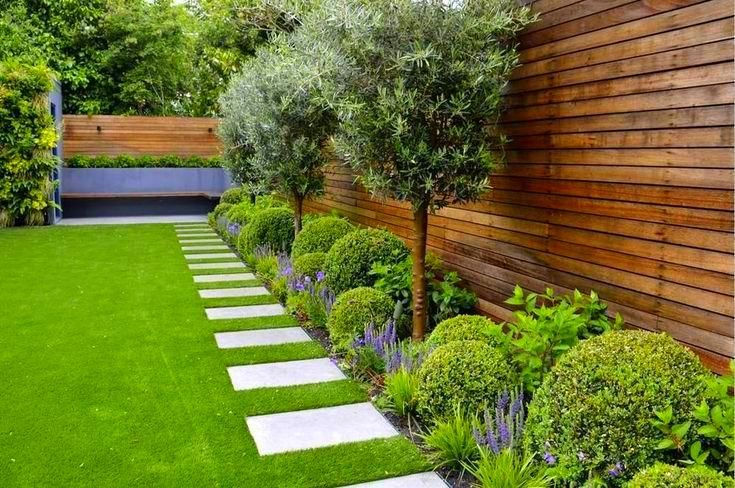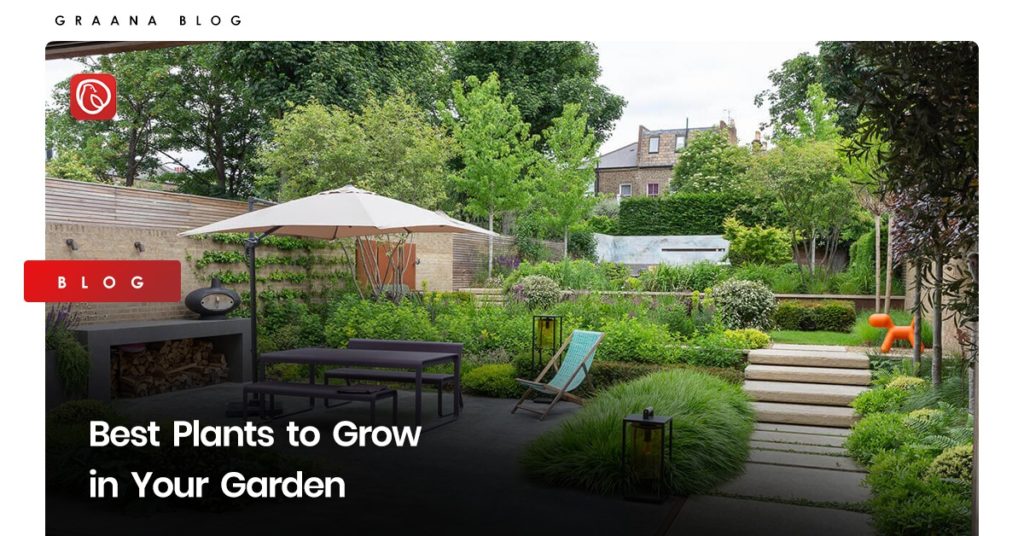There’s always room for one plant, no matter how large or small your garden is. But the question is, which one? Whether you are a beginner or an old gardening enthusiast, it can be difficult to decide which plant to grow considering the overwhelming number of choices. Graana.com provides a list of some of the best plants for the garden below that you can consider growing.
List of Best Plants for Your Garden
The following are some of the most popular plants that are usually grown in home gardens.
Catmint

This is an aromatic herb that produces clusters of lavender-blue flowers, adding shades of vivid colours to your garden from May right through to December. It has a pleasant fragrance, thanks to its aromatic, silvery-hued leaves. It can spread to a width and height of around 50 cm in the right conditions.
Fuchsia
Fuchsias are perennial shrubs with elegant flowers that are said to be reminiscent of ballerinas. The experts recommend them as one of the best plants for beginners as they’re easy to grow and can last for months. These plants should be placed in sun or partial shade, in well-drained, moist soil. They can even provide shelter from cold winter winds.
African Daisy

African Daisy is one of the best plants to grow in the garden. These plants are also easy to grow and are relatively low-maintenance. African daisies prefer well-drained chalk, loam, or sandy soils, and require plenty of sun.
In summers, they produce daisy-like flowers in a range of vibrant colours depending on the variety. White and purple tones are classic choices, but you can also find bright yellow or orange options. There are some types that can survive mild winters, although you have to follow experts’ advice to protect them from frost.
Rose
Roses are lovely and romantic in any garden setting, whether you have a tiny urban plot or a large, country backyard. Many new types have been bred to be long-blooming and more resistant to diseases. For your first attempt, you can try growing a shrub or landscape rose because they require minimal care.
Sunflower

With their impressive show-stopping blooms, sunflowers are a popular choice for planting in home gardens. While the classic golden variety is well-known, other colours are also available, such as deep orange and pale white. For example, the “Italian White” sunflower has creamy-coloured petals with deep chocolate centres, while the “Velvet Queen” is a rich dark red. To grow sunflowers, sow the seeds in a sunny, well-drained spot in the spring and water them regularly. These flowers will bloom in the summer.
Pansies
While the mix of bright and bold colours is the most appealing feature of Swiss giant pansies, the ease of planting and caring for them are also huge benefits. Simply sow them about a half-inch deep under healthy topsoil, and then keep it moist. As long as you plant the pansy seeds after the last frost of the season, you can count on shoots poking up within a couple of weeks and the first flowers blooming just shortly afterwards. In the right conditions, you can enjoy these colourful flowers for weeks or even months.
Cosmos
Cosmos bipinnatus is a perfect plant for cottage gardens and for those who are new to gardening. Typically in shades of white or pink, these daisy-like flowers have vibrant yellow centres and are admired by many.
You can begin growing the seeds indoors in March or April to get an early start on your cosmos. Once they have grown their first two leaves, move them to larger pots. When the weather is warmer in May, acclimate the seedlings to the outdoors by placing them on your patio for a week before planting them in the ground or a container. These flowers prefer sunny spots with moist, well-drained soil.
Hydrangeas

Hydrangeas are a popular plant known for their large, showy blooms. They come in various colours, including blue, pink, purple, and white, depending on the pH of the soil they are grown in. The colour can also be changed by altering the soil pH. There are several types of hydrangeas, including mophead, lace cap, and oakleaf, each with its unique flower shape.
Tips to Take Care of Your Plants

There are a few essential things that you need to keep in mind to keep your plants in good shape, as explained below.
Know the Type of Plant
The first step in taking care of a plant is to know about its specific type. Different plants have different water and light requirements. For instance, some need strong light while some plants like indoor plants need the soft morning light. Check online sources and do your research on how you should care for a particular plant.
Consider Light and Space
Plants develop through a process called photosynthesis, which can only take place in light. As we’ve mentioned above, some plants need more light than others. So select an area for each plant that gets adequate light. You can find tons of references online that can guide you about plant light requirements.
Some plants like ivies, string-of-pearls, vining pothos etc. need space to grow. Hence, it is better to hang them in a pot where their growth is not hindered.
Water Properly
If the pot is either too dry or overwatered, it can damage the roots and affect the growth of your plant. In some cases, it can also kill the plants. Thus, watering them properly is important. You need to check what kind of plant you have and how frequently it needs to be watered.
You can also stick your finger up to the knuckle in the soil to see how moist it is. If the soil is damped all the way through, you don’t need to water the plant. Otherwise, pour some more water in it and check again to determine how wet the soil is. You can also tell how dry the plant is by lifting the pot. It will be heavy after having been watered, but it will be lighter after the water dries out.
Choose the Right Pot
You need to consider the material and size of the pot you are growing your plant in. Materials like plastic, glass, and metal absorb less water as compared to ceramic and clay. So, before potting the plant, choose the appropriate container.
Don’t Move Your Plants Too Much
Plants adapt to their surroundings quite slowly. So it’s best that you don’t move them around a lot. Shifting it from place to place with differences in lighting and other elements can harm the growth of the plant.
Fertilise and Control Pests
Plants need nutrients from soil and to remain alive, thus adding fertiliser in the pot regularly will give them much-needed minerals to grow.
Insects like Aphids, Scale and Whiteflies can be damaging to your plants. Hence, it is important to keep checking your plants regularly for any sign of pests, and then treat them accordingly. You can use insecticides to keep them safe from pests.
Keep Foliage Clean
Dust on the plants can block the sunlight and harbour insects. Therefore, clean the leaves regularly by wiping them with a moist towel or using a spray bottle.
Conclusion
As a gardener, the best thing that you can do is find out everything about what you want to plant before you get started. The more you know about your plants, the better your chances will be of having them grow to full size. It is especially important to know about vegetable plants that sometimes have special requirements in terms of sunlight and soil. You should also remember to allow enough space for them to grow and flourish. Plus, you don’t want the plant roots to become tangled in each other. The best thing to do is to place all of your plants in neat single-file rows to avoid complications.
For more information regarding the ways to take care of plants in the garden, follow Graana blog.




